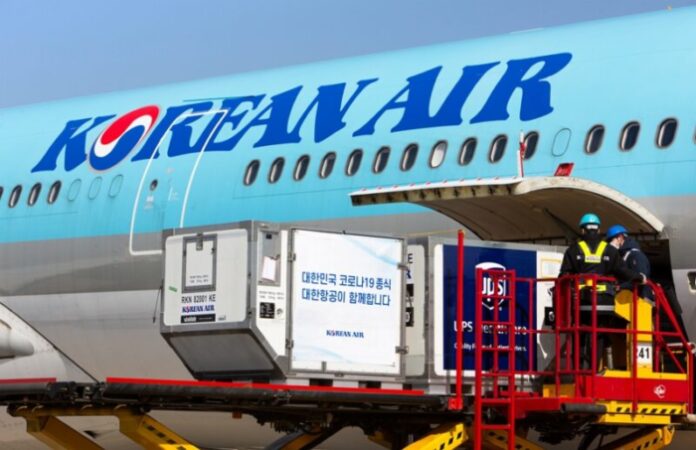
-
IATA says air cargo weakened as demand tracked pre-pandemic levels in July this year
-
Global demand measured in cargo ton-km fell 9.7% y-o-y in July with international operations contracting 10.2%. Demand fell 3.5% from the July 2019 level
-
The aviation group said export orders decreased in all markets except China, which began a sharp upward trend in June
Air cargo services saw demand track pre-pandemic levels in July 2022, but business was much weaker than in July 2021, the International Air Transport Association said in a press release on September 7.
IATA said global demand, measured in cargo ton-kilometers (CTKs), fell 9.7% in July from a year ago with international operations contracting 10.2%. However, demand declined 3.5% compared with the level July 2019.
Capacity was 3.6% more than in July 2021 (increasing 6.8% for international operations), but still 7.8% below July 2019 levels.
The group, which has around 290 member airlines globally, said several factors in the operating environment should be noted:
- New export orders, a leading indicator of cargo demand, decreased in all markets except China, which began a sharp upward trend in June.
- The war in Ukraine continues to impair cargo capacity used to serve Europe as several airlines based in Russia and Ukraine were key cargo players.
- Global goods trade continued to recover in Q2 and the additional easing of COVID-19 restrictions in China will further boost recovery in coming months. While maritime will be the main beneficiary, air cargo is set to receive a boost.
“Air cargo is tracking near 2019 levels although it has taken a step back compared with the extraordinary performance of 2020-2021,” said Willie Walsh, IATA director general.
“Volatility resulting from supply chain constraints and evolving economic conditions has seen cargo markets essentially move sideways since April. July data shows us that air cargo continues to hold its own, but, as is the case for almost all industries, we’ll need to carefully watch both economic and political developments over the coming months.”
How the regions performed in July:
- Asia-Pacific airlines’ air cargo volumes fell 9.0% year on year in July 2022, a significant drop from the 2.1% decline in June. The region’s airlines were still impacted by the war in Ukraine, labor shortages, and lower trade and manufacturing activity due to Omicron-related restrictions. The scale of contraction indicates volatility in volumes. Available capacity in the region increased 2.7% y-o-y.
- North American carriers saw cargo volumes decrease 5.7% in July compared with a year ago. This was better than the 13.5% slide in June. The lifting of restrictions in China should boost demand. Capacity grew 4.2% y-o-y.
- European carriers saw a 17% y-o-y decrease in cargo volumes in July, the worst performance of all regions for the third month in a row due to the war in Ukraine. Labor shortages and lower manufacturing activity in Asia due to Omicron also affected volumes. Capacity increased 0.9% y-o-y in July.
- Middle Eastern carriers experienced a 10.9% y-o-y drop in cargo volumes in July. Significant benefits from traffic being redirected to avoid flying over Russia failed to materialize and stagnant cargo volumes to/from Europe hit the region’s performance. Capacity was up 4.9% y-o-y.
- Latin American carriers’ cargo volumes increase of 9.2% y-o-y in July, the strongest performance of all regions. Airlines in this region showed optimism via new services and capacity and, in some cases, investing in additional planes for air cargo in coming months. Capacity in July grew 21.4% y-o-y.
- African airlines’ cargo volumes fell 3.5% y-o-y, significantly lagging the 5.7% growth in the previous month. Capacity was 2.2% below July 2021 levels.




